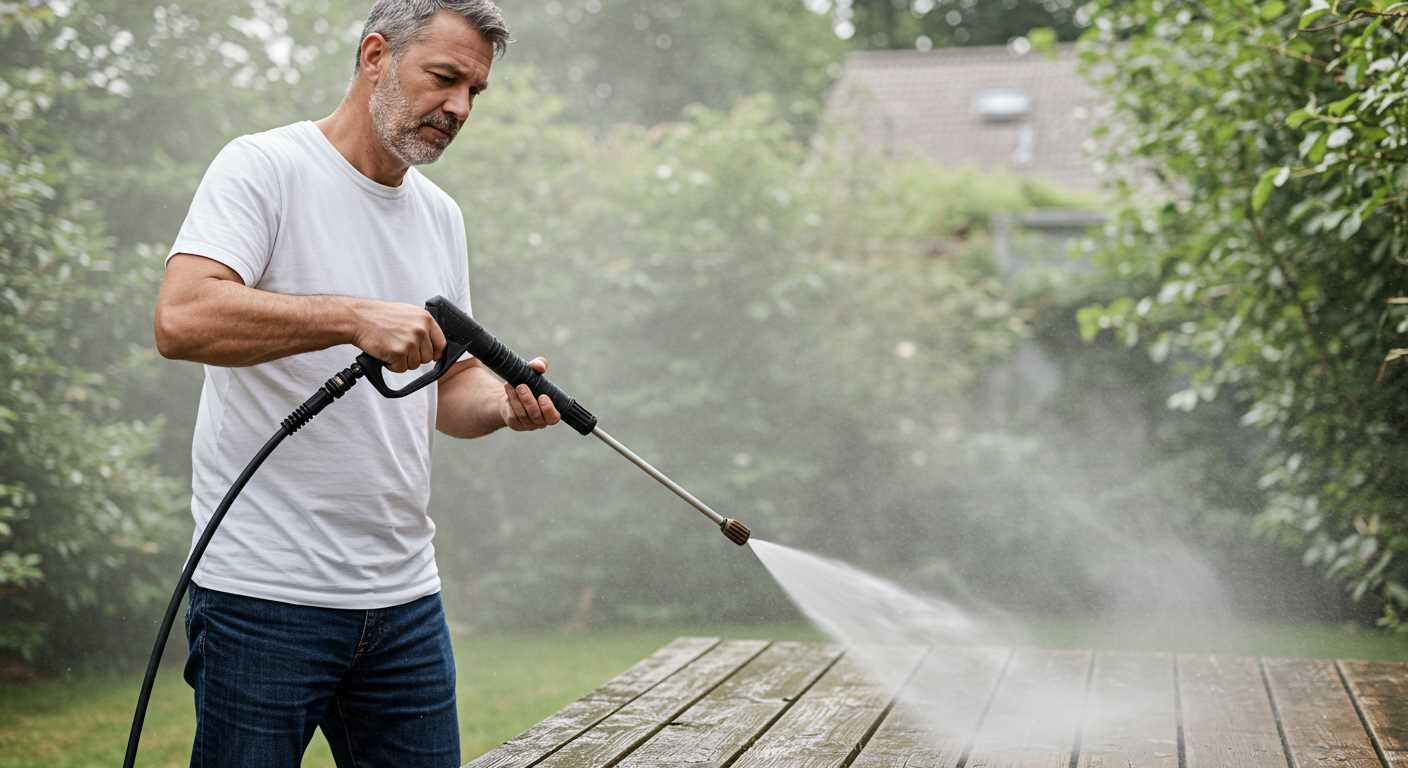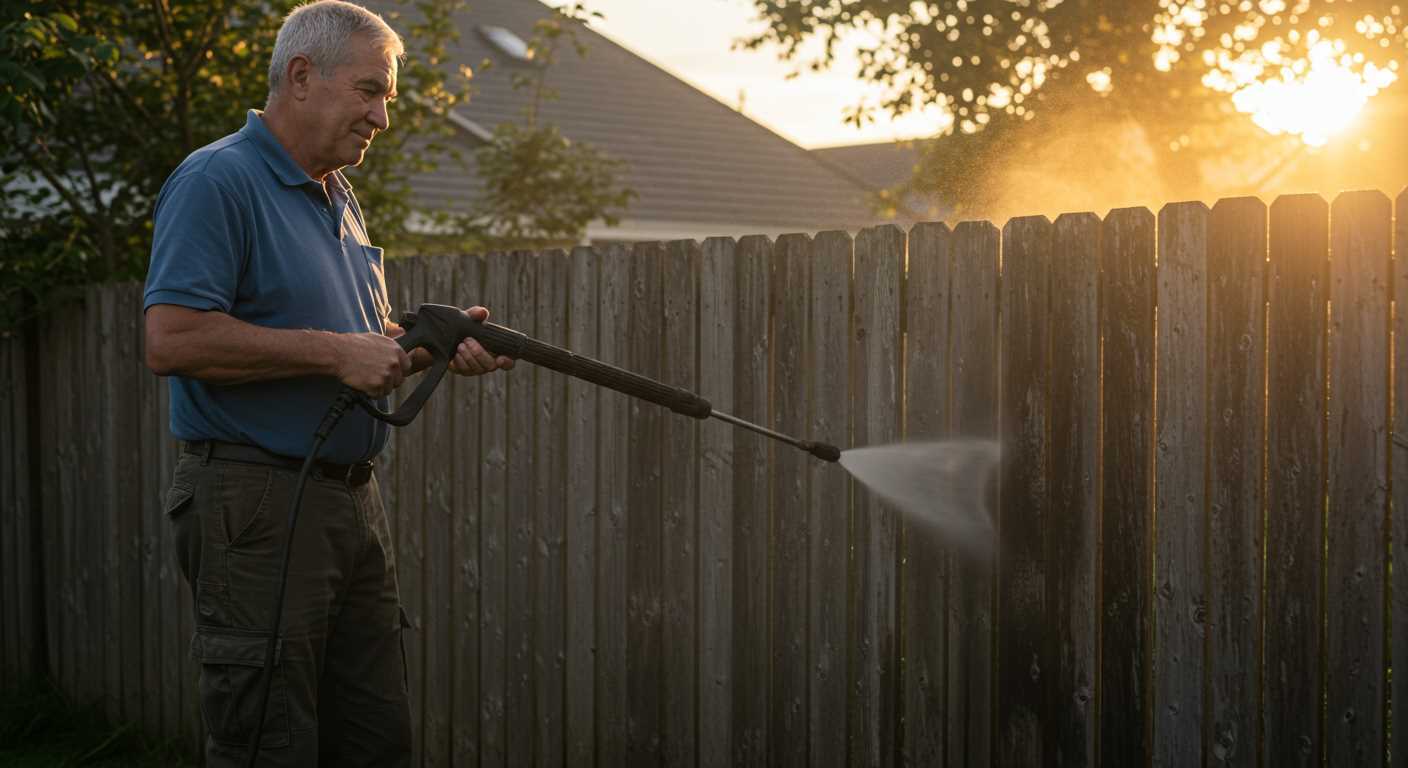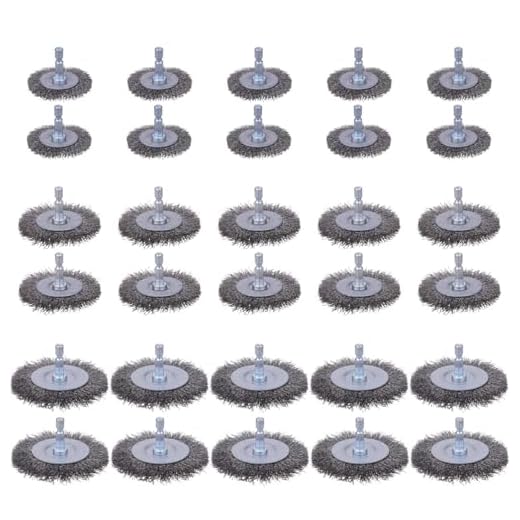



Utilise a mixture of vinegar and water for a straightforward solution to tackle stubborn grime. Create a blend using equal parts of white vinegar and warm water. Pour the mixture into a spray bottle for easy application. Liberally soak the affected areas, allowing the solution to sit for about 30 minutes before scrubbing with a stiff-bristled broom. The acidity in vinegar helps break down dirt and stains, leaving your surfaces looking refreshed.
For stubborn stains, consider introducing baking soda into the equation. Combine one cup of baking soda with two cups of water to form a thick paste. Apply this paste directly onto the stained areas and let it sit for at least an hour. Afterward, scrub with a broom or brush. The abrasive qualities of baking soda complement its alkaline nature, effectively lifting stains.
In cases where organic growth like mould or moss is present, a diluted bleach solution can be beneficial. Mix one part bleach with ten parts water, then spray the mixture on the affected spots. Be cautious and wear appropriate protective gear during this process. Allow the solution to work for 15 minutes before rinsing thoroughly this technique not only eliminates the unwanted growth but also helps sanitise the surfaces.
Lastly, if your surfaces drain poorly and collect debris, consider sweeping or using a leaf blower to remove loose material before applying any cleaning method. Keeping surfaces clear will enhance the effectiveness of your chosen strategy and ensure thorough restoration.
Effective Methods for Surface Restoration
Utilise a sturdy broom or a stiff-bristled brush for the initial sweep of dirt and debris. Pay close attention to corners and edges to ensure thorough removal.
Combine warm water with a suitable detergent for a homemade cleaning solution. A mixture of vinegar and water or baking soda can also serve effectively, depending on the type of stain present. Apply this solution generously to the stained areas.
After allowing the mixture to sit for a while, use a scrub brush to agitate the surface. This action helps to break down stubborn grime and removes discolouration.
For persistent marks, enlist the help of natural abrasives like baking soda or even a mixture of salt and lemon juice. These can provide additional scrubbing power without damaging the surface.
Once scrubbing is complete, rinse thoroughly with a hose to remove any leftover cleaning solution and loosened debris. Consider using a bucket to catch the rinse water if drainage is an issue.
Position a squeegee or a large sponge to remove excess water and promote quick drying, which helps prevent new dirt from redepositing.
For ongoing maintenance, apply sealant to the surface after cleaning to protect against future stains and weather damage. This step can enhance longevity and reduce cleaning frequency.
Regularly check for and address any moss or algae growth, particularly in shaded areas, using a combination of brush and environmentally-safe treatments.
Choosing the Right Cleaning Solution for Your Surface
Opt for a solution that targets the specific type of stain you’re dealing with. For oil or grease, a degreaser is most effective; look for biodegradable options that won’t harm the environment.
For general dirt and grime, a mix of vinegar and water can work wonders. Combine equal parts of each in a spray bottle and apply directly to the affected areas. Let it sit for about 15 minutes before scrubbing to enhance its potency.
Specialty Options
For stubborn stains, consider enzymatic cleaners, which break down organic material. They are particularly useful for food spills or wildlife droppings. Follow the manufacturer’s instructions for optimal usage.
Always conduct a patch test in a less visible area, ensuring the solution does not cause discolouration or damage your surface. This step is crucial, especially with stronger chemicals.
Cost-Effective Alternatives

If you prefer a DIY approach, combine baking soda with water to create a paste for challenging spots. Apply this paste, let it dry, and then scrub it away. Not only is this effective, but it’s also cost-efficient and eco-friendly.
Maintain a clean surface with regular sweeping and light applications of your chosen solution to prevent the build-up of stains. Keeping on top of this will save you time and effort in the long run.
Ultimately, the right formula can make all the difference in achieving a spotless surface, so choose wisely based on your needs and the specific challenges you face.
Preparing the Area: Clearing Debris and Obstacles
Before beginning the task, remove any visible debris from the surface. This includes leaves, dust, and small stones which can obstruct the cleaning process. A broom or a sturdy rake works best for this.
Steps to Clear the Area

- Pick up larger items by hand to avoid damaging equipment.
- Use a shovel for heavier debris such as soil or larger rocks.
- Follow up with a broom to sweep away finer particles.
This preparation lays the groundwork for a more effective wash. After removal of debris, inspect for any persistent obstacles like garden hoses or furniture. Relocate those to ensure no physical items impede your efforts.
Final Touches Before Proceeding
Finally, check for any stains or marks on the surface that may require specific attention later. Note these and prepare appropriate solutions for treatment. An organised approach saves time and enhances results.
Thorough preparation will make the cleaning process smoother and more productive, leading to a refreshed and well-maintained appearance.
Best Tools for Manual Pavement Cleaning

Investing in the right tools can significantly enhance the effectiveness of your cleaning regimen. A stiff-bristled broom is indispensable for removing loose dirt, debris, and leaves. Opt for a broom with durable bristles to ensure longevity and performance.
Scrub Brushes
Using a scrub brush with firm bristles can tackle tougher stains more effectively. Look for models with a comfortable handle to minimise strain during prolonged use. For stubborn spots, select a brush designed for outdoor surfaces to withstand wear and tear.
Garden Hose and Nozzle
A garden hose paired with a spray nozzle provides efficient water application. Adjustable nozzles allow you to control the pressure and angle, making it easier to disperse cleaning solutions or rinse debris. Choose a length suitable for your area to avoid frequent repositioning.
In addition to these basics, consider a few specialised tools, such as a chemical sprayer for solutions or a squeegee for finalising the finish. Regular maintenance with these tools can keep surfaces looking their best with minimal effort.
Step-by-Step Guide to Scrubbing and Rinsing
Prepare a bucket with hot water and your selected cleaning solution, following the manufacturer’s instructions for dilution. Use a stiff-bristled broom to sweep the surface, ensuring loose dirt and debris are removed. Once the area is clear, immerse a scrub brush in the soapy water. Start scrubbing one section at a time, applying firm pressure to tackle stubborn stains. For heavily stained areas, allow the solution to sit for a few minutes before scrubbing again.
Rinse the scrub brush frequently in the bucket to remove accumulated dirt. If the brushes become ineffective, consider replacing them to maintain cleaning efficiency. After scrubbing, gather a garden hose with a spray nozzle. Begin rinsing the treated sections with clear water, directing the flow to wash away any soap residues and dislodged grime. Ensure the water runs freely so that no solution remains on the surface.
Move systematically, ensuring each area is thoroughly rinsed before moving to the next. As you work, monitor the results. Persistent marks may require additional scrubbing and rinsing. Once satisfied with the cleanliness, let the area dry completely before using it again. Test water drainage in the surroundings to prevent pooling and keep the surface looking pristine.
Dealing with Stains: Techniques for Specific Materials
Addressing tough stains requires targeted approaches based on the surface composition. Here are effective methods tailored to different materials:
- Concrete: For oil spills, apply a generous amount of cornstarch or kitty litter. Let it absorb for at least an hour, then sweep away. Follow with a solution of warm water and dish soap, scrubbed with a stiff brush.
- Asphalt: Clean with a mixture of vinegar and water–use a 1:1 ratio. Let it sit for 30 minutes, then scrub gently and rinse thoroughly with water to avoid damaging the surface.
- Brick: For mould or mildew, a solution of bleach and water (1 cup bleach to 1 gallon of water) can be effective. Apply it carefully using a brush. Rinse immediately to prevent damage to the mortar.
- Tile: Create a paste of baking soda and water for stubborn stains. Apply it directly to the stain, let it sit for 15 minutes, then scrub with a soft-bristle brush and rinse with clean water.
- Natural Stone: Avoid acidic substances. Instead, use a pH-neutral cleaner mixed with water. Apply the solution, gently scrub with a non-abrasive pad, and rinse well.
These specific techniques help maintain the integrity of various surfaces while effectively tackling stains. Always test any cleaning solution on a small, inconspicuous area first to ensure compatibility.
Maintaining Clean Pavement: Preventative Tips
Regular inspection is the first line of defence against grime build-up. Detecting signs of dirt accumulation or any cracks early allows for timely intervention, preventing more severe damage.
Applying a sealant every few years protects surfaces from staining and weathering. This layer acts as a barrier, making it harder for substances to penetrate and adhere.
Using mats or rugs at entrances can trap dirt before it reaches outdoor surfaces. Choose materials that are easy to clean or replace, ensuring they don’t become a source of even more muck.
Establish a routine sweeping schedule to remove leaves and debris. Schedule at least once a week, or more frequently during heavy fall seasons to minimise organic build-up.
Consider seasonal maintenance checks, especially after heavy rainfall or snow. Moisture can exacerbate staining and create slippery conditions.
Avoid the use of salt in winter; it can lead to corrosion over time. Instead, opt for sand or cat litter for traction during icy conditions.
| Tip | Frequency |
|---|---|
| Regular inspection | Monthly |
| Sealant application | Every 2-3 years |
| Debris sweeping | Weekly |
| Seasonal maintenance checks | Biannually |
These practices will contribute to keeping surfaces in pristine condition, reducing the need for extensive cleaning efforts in the future.










